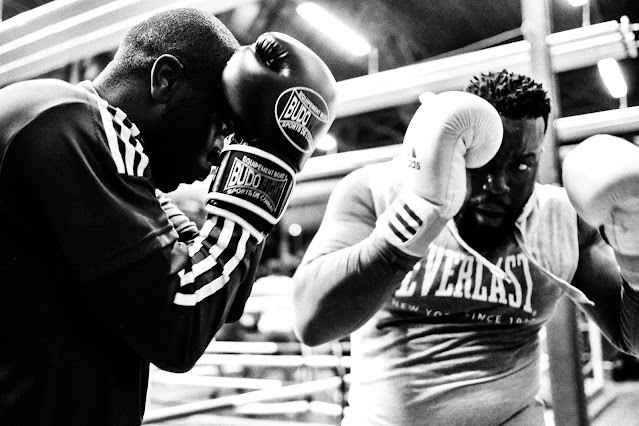How Boxing Training Pads Work - Step-by-Step Instructions and Mechanics
Boxing training pads are the unsung heroes of the boxing world. They play a crucial role in honing a boxer's technique, speed, and power. Whether you're a coach guiding a student or a training partner supporting a fellow boxer, understanding the mechanics behind these pads is essential to maximize the benefits of pad work. In this blog, we'll take you on a journey through the step-by-step instructions and mechanics of how boxing training pads work. So, let's slip on the pads and get ready to discover the magic of this essential training tool!
The Basics of Boxing Training Pads
Boxing training pads, also known as focus pads or mitts, are specially designed handheld targets worn by trainers or partners to receive punches and practice various combinations. They come in various shapes and sizes, but most are made of high-density foam with a protective cover. The primary goal of pad work is to simulate a real boxing experience while providing a safe and controlled environment for the boxer to develop their skills.
Proper Pad Holding Technique
Before delving into the mechanics, it's crucial to understand how to hold the pads correctly. As the pad holder, your role is to provide a stable and consistent target for the boxer. Here's a step-by-step guide to the proper pad-holding technique:
Step 1: Position Yourself
Stand in a comfortable and balanced stance with your hands up to protect your face. Keep your elbows close to your body and maintain eye contact with the boxer.
Step 2: Hand Placement
Depending on the type of punch being practiced, position the pads appropriately. For example, when working on jabs and crosses, align the pads horizontally at shoulder level. For hooks, tilt the pads vertically to mimic the target angle.
Step 3: Absorb the Impact
As the boxer throws punches, maintain a firm grip on the handles and absorb the impact with a slight bend in your elbows. Avoid locking your arms to prevent unnecessary strain.
Mechanics of Pad Work
Now that we have the basics down, let's explore the mechanics of how boxing training pads work:
Step 1: Warm-Up
Begin with a warm-up to get the blood flowing and the muscles ready for action. Shadow boxing or light skipping are excellent ways to warm up before pad work.
Step 2: Start with the Basics
Focus on fundamental punches, such as the jab, cross, hook, and uppercut. The pad holder calls out the combination, and the boxer executes it. Start slowly to ensure accuracy and gradually increase speed and intensity.
Step 3: Footwork and Movement
Pad work isn't just about throwing punches; it's about footwork and movement too. Encourage the boxer to step, pivot, and move around while throwing punches. This replicates real boxing scenarios and enhances overall agility.
Step 4: Focus on Defense
Incorporate defensive maneuvers into pad work. The pad holder can throw light punches or quick taps to prompt the boxer to slip, duck, or block effectively.
Step 5: Head Movement
Improve head movement by adding bobbing and weaving drills. The pad holder can move the pads in circular or diagonal patterns, and the boxer must react and adjust their head position accordingly.
Step 6: Combinations and Counters
As the boxer becomes more proficient, work on more complex combinations and counters. This challenges their coordination, speed, and reaction time.
Step 7: Intensity and Interval Training
To simulate the intensity of a real fight, introduce interval training. Alternate between high-intensity rounds and brief rest periods to push the boxer's limits.
Step 8: Encourage Feedback
Pad work is a two-way street. Encourage the boxer to communicate with the pad holder, providing feedback on the pads' positioning and speed to optimize training.
Benefits of Boxing Training Pads
Boxing training pads offer numerous benefits that contribute to a boxer's growth and development:
Technique Refinement: Pad work allows boxers to fine-tune their punching technique, ensuring proper form and mechanics.
Hand-Eye Coordination: The constant interaction with moving targets improves hand-eye coordination and timing.
Cardiovascular Conditioning: The fast-paced nature of pad work provides an excellent cardiovascular workout, building endurance and stamina.
Speed and Power: Regular pad work enhances the boxer's speed and punching power through consistent repetition and resistance.
Focus and Concentration: Pad work demands focus and concentration, sharpening the boxer's mental acuity during training.
Realistic Simulation: It creates a more realistic training environment, replicating the dynamic nature of a boxing match.
Conclusion
Boxing training pads are an indispensable tool in the boxer's arsenal, unlocking a world of technique, power, and skill. By understanding the mechanics and following step-by-step instructions, trainers and boxers alike can harness the full potential of pad work to achieve their boxing goals. So, the next time you don the gloves and training pads, remember the magic you hold in your hands, and let the art of boxing come alive through this dynamic and rewarding training technique. Happy pad work and keep punching!
.jpg)


Comments
Post a Comment